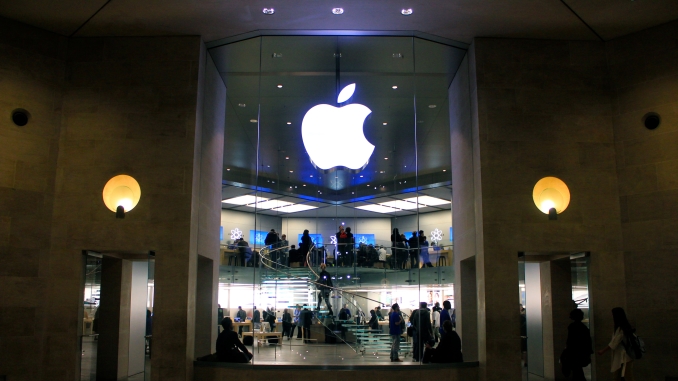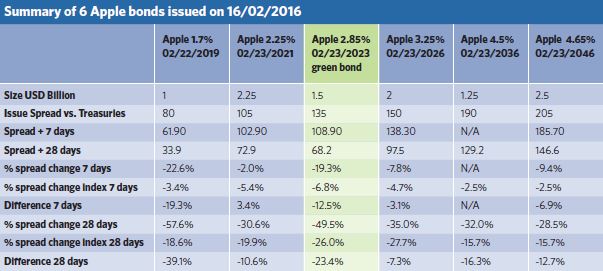
Green bonds do not yet offer cheaper funding than conventional comparables, according to a report from the Climate Bonds Initiative (CBI) and the International Finance Corporation (IFC), even if momentum reflected in moves from IPTs and secondary performance – notably on an Apple bond – suggests a positive future.
The study, published in early August, was undertaken to examine anecdotal evidence that green bonds may offer demand and pricing benefits. Overall, it analysed 62 investment grade green bonds issued between 1 January 2016 and 31 March 2017, including deals from financial institutions, corporates and public bodies. To be considered, the deals must be denominated in euros or US dollars and have a size of at least $200m (EUR170m) equivalent and maturity of at least three years.
To assess whether green bonds are priced inside the curves of the respective issuers’ conventional bonds, thereby offering the issuer with “a green discount” or “greenium”, the study considered a smaller sample of 14 green bonds, comprising 10 US dollar deals from seven issuers, and four euro bonds. The smaller sample size is explained by the authors including only bonds with yield data available and with a minimum of six comparable bonds.
The report found that six were priced inside the issuer’s yield curve, four were priced flat to secondary curves, and four were priced wider. Furthermore, it noted that with five of the six bonds priced inside their respective curves, issuers had other bonds trading inside their curves, meaning that the right pricing did not necessarily reflect a greenium.
“For now, we can say that green bonds do not appear to behave any differently from vanilla bonds in this regard,” said the report. “Some price outside their curves, some price on their curves, and some price inside their curves.
“We will continue to monitor this to see if any patterns emerge.”
Investors might be willing to accept a greenium in some cases because green bonds have scarcity value, the report suggested, also noting that some buyers are compelled to buy green bonds to meet a mandate.
It concluded that green bonds also behave similarly to “vanilla” bonds in other ways, finding, for example, that euro bonds in green and conventional markets are priced on average around 13bp tighter than initial price thoughts and are on average three times oversubscribed.
However, differences were also uncovered, with US dollar green bonds – but not euro deals – priced on average 5bp-6bp tighter than IPTs than vanilla US issues, and that green bonds tend to attract a more diverse range of investors.
“Bookrunners are quoted as saying that the ‘green angle’ can help them to price more tightly than otherwise, due to the extra interest they receive,” said the report.
The green bonds analysed tended to perform better on the secondary market than relevant indices, according to the report, with 70% having tightened more than their corresponding index seven days after issue. The report said this implies that many green bonds are being under-priced at issuance.
“We are not able to say whether this market behaviour will persist, but this could point towards tighter pricing in the future,” it said. “For the time being, this data should allay concerns among investors about longer term underperformance by green bonds, since there doesn’t seem to be any.
“There is certainly no penalty attached to holding green bonds as opposed to other bonds of the same issuer and, in some instances, our analysis suggests there may be a reward.”
The report did not generally compare the performance of the green bonds with the performance of other contemporaneous issues in the primary market (as was the case in the other comparisons), and these may have exhibited a similar outperformance versus indices.
However, it did highlight the performance of a $1.5bn seven year green tranche of a $12bn nine tranche Apple bond issued in February 2016, which offered the opportunity for a rare like-for-like comparison. The study disregarded a two year fixed rate tranche and two FRNs, but the seven year green tranche put in the most impressive performance versus indices over seven and 28 days of all but the shortest (three year) tranche (see chart below).
“This is an example of a green labelled bond displaying performance benefits when compared to vanilla bonds issued by the same company on the same day,” said the report.
The report can be found here.

Source: Climate Bonds Initiative, IFC, Bloomberg, Thomson Reuters
Photo: Apple store, Paris; Source: Wikimedia Commons/Mikhail Shcherbakov



